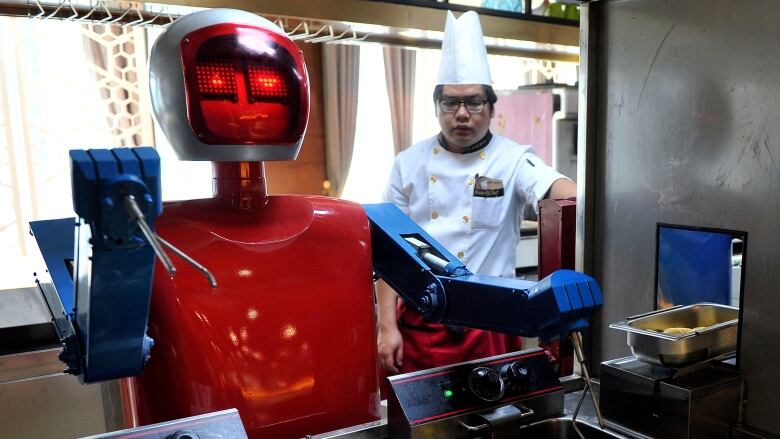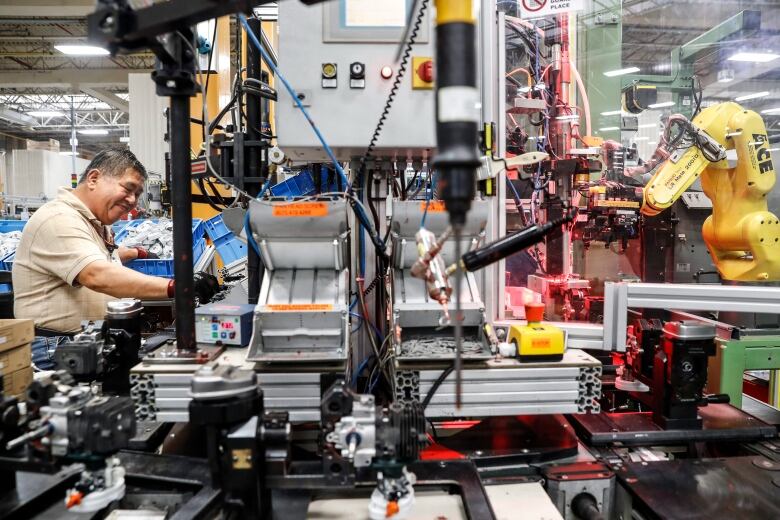Artificial intelligence is on the rise but not without help from humans
'We've seen great progress in lab-like settings, but it is hard to actually implement AI in the real world'

From instant messaging to banking apps, the digital services we use are increasingly powered by artificial intelligencebut what users might not know is how present the human hand is in these increasingly popular tools.
Recent reporting by The Guardian and the Wall Street Journal explored the issue of so-called pseudo AI, a practice in which users think something is powered by a bot or AI, when it'sactuallyanother person.
The tangled ties between machine-driven intelligence and people power and the questions around transparency and privacy that come with it go back years. In2009, after questions about how its service worked,early voice-to-text service called Spinvoxexplained to the media thathumans helped its AI transcribe messages when there were gaps in the database.
More recentlythere have been questions aboutan automated expense reporting service that sometimes drafts in human help from Amazon's Mechanical Turk service, and third-party apps that sometimes allow human engineers to scan anonymizedemail inboxes.
In all of these examples, there was a media report, some blowback and then an explanation from the companies involved about how humans are often still part of the AI process.
So does the reliance on human help indicate that perhaps the field is not as far along as enthusiasts would have us believe?
Adam Drake, a startup adviser and expert in artificial intelligence, says generally speaking, AI capabilities "are far lower than people often admit."
Cheap humans
While the premise of automated systems is that they will eventually prove to be more cost effective than human labour, at the early stage of developing new tech, the initial investment required is higher than just hiring humans to do the job.
"Developing the software can be quite expensive, and human labour is cheap," says Robert Seamans, an associate professor at the NYU Stern School of Business.
Starting with humans doing the work "is the way companies should go," says Drake, who has worked on the development of data-driven solutions for industries including e-commerce, health care, and online travel.
"It is very easy to spend a lot of time and money developing an elaborate, automated, scalable system for a problem that nobody really cares about," he explains. "By doing things manually and less efficiently at first, companies can ensure that they are investing in technology which solves a valuable problem for customers."

Another often overlooked reason why tech companies would turn to humans in the process of developing automated systems is that implementing AI solutions is really difficult.
"We've seen great progress in lab-like settings, but it is hard to actually implement AI in the real world," says Seamans.
Drake says that as long as it's done well, customers don't care whether something is done by a human or by AI. But, he adds, "without equivocation, that misleading customers, investors, or the public about the nature of the company and how it solves problems is ethically wrong and also bad business practice."
The catch is, tech companies don't want to seem low-tech, in a market in which AI is such a hot commodity. As Seamans puts it, "it's hard to be a billion-dollar unicorn if all you are doing is paying people for manual labour."
Ethical concerns
But some say thecontemporary case of the emperor's new clothes comes withethical concerns.
"It boils down to false advertising," says John C. Havens, an advocate of the ethical development of autonomous systems and the author of Heartificial Intelligence, which examines the dynamic between people and machines. His work stresses the importance of valuing humansin the pursuit of intelligent machines.
"If you're selling somebody something and they assume that it is software, that is not the same as selling a service that includes humans as part of the service."

Needless to say, there are also substantial privacy concerns that arise when human workers have access to personal messages be they voicemails, emails or chats that users assumed were between them and a machine, or being processed or scanned by an algorithm, not a stranger.
Despite the fear mongering about automation displacing workers and wiping out entire industries in the coming decades, "all of this will play out more slowly than popular media would lead you to believe," notes Seamans.
After all, for all of the cases we hear about robots taking human jobs, there seems to still be a healthy job market for humans, pretending to be machines.












_(720p).jpg)


 OFFICIAL HD MUSIC VIDEO.jpg)
.jpg)



























































































